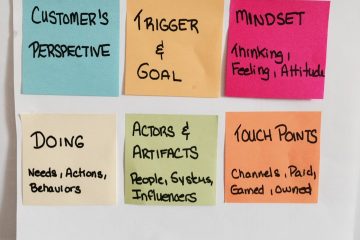The web is for everyone. When it is well designed. When it isn’t, it is a barrier. Creating frustration, denying access, failing to represent individuals, and disenfranchising groups. When designers and developers are successful, the web realizes its potential: working for all people. Accessible. Usable. Inclusive. But what does this actually mean for UX teams who have the power—and responsibility—to make it happen?
Progress starts with clarity and shared understanding. In digital and experience design, terms are often interchanged and confused. Practitioners cringe when stakeholders say UX, and they are referencing the UI or when Agile is used as a misnomer for fast software development. With increased mainstream focus on diversity and equity, the casual usage of inaccurate terms related to accessibility and inclusivity has resulted in confusion that extends into the design world. When it comes to designing accessible and inclusive experiences, there are similarities and overlap, but the key differences matter. This article will explain the distinctions between these terms and the relevance to design and development teams.
Accessibility and Inclusivity: Definitions and Differences
Accessibility ensures that an experience or functionality can be accessed by anyone regardless of ability. The traditional definition of digital accessibility focuses on addressing the specific needs of people with disabilities when using a website, application, or digital system. Guidelines such as the W3C’s Web Content Accessibility outline technical, code, interaction, and design standards (e.g. color contrast ratios, touch-target and font sizes, alt text, keyboard navigation etc.). Meeting these requirements ensures individuals that have speech, auditory, visual, or motor impairments can understand, interact, and navigate without barriers regardless of ability.
The guidelines are based on the W3C’s four principles for accessibility:
- Perceivable: Information and user interface components must be presentable to users in ways they can perceive. For example, a visually-impaired person can read content with a screen reader, or audio captions are provided for those who can’t hear.
- Operable: User interface components and navigation must be operable. Once the content is perceived, people must be able to interact with it whether by keyboard, voice, mouse, or touch.
- Understandable: Information and the operation of the user interface must be understandable. Users should be able to comprehend the presentation.
- Robust: Content must be robust enough that it can be interpreted reliably by a wide variety of user agents, including assistive technologies. Users should be able to access the content even as technologies evolve.
Many people will have some familiarity with these principles and accessibility guidelines, but they may not be aware of the different levels of conformance. Each level clearly outlines requirements that can be implemented and monitored.
- Level A: The minimum level. All basic accessibility requirements are satisfied.
- Level AA: Medium-level accessibility requirements satisfied. This is the level that many businesses aim to satisfy.
- Level AAA: The highest number of requirements are satisfied, including A, AA, and AAA.
(Learn more about WCAG’s conformance requirements.)
Several components, all which must work together, impact accessibility: the web content, including on and off-screen elements and code; how the content is accessed (e.g. browsers, voice, players, software), and the production method such as software, services, authoring tools, content management systems, running scripts, etc.
Accessibility standards are largely about the structure and format of information and how it is presented but not the information itself. The words, images, and videos could be worthless, offensive, discriminatory, or biased but still accessible. Following accessibility best practices does not guarantee that people will feel represented and want to use or like something. That’s where taking an inclusive design approach comes in.
“The power of the Web is in its universality. Access by everyone regardless of disability is an essential aspect.”
-Tim Berners-Lee, W3C Director and inventor of the World Wide Web
Inclusive Design: From Abilities to Perspectives
Inclusivity strives to create something that everyone can and will want to use. It includes people who are differently-abled along with minorities and diverse populations. Inclusive design is a design approach that considers the diversity of people’s attributes, experiences, and situations such as:
- Gender
- Age
- Location
- Culture
- Language
- Education and literacy
- Technical competency and experience
- Socio-economic factors
- Physical environment
- Technology, device, and connectivity
Microsoft defines Inclusive Design as, “a methodology, born out of digital environments, that enables and draws on the full range of human diversity. Most importantly, this means including and learning from people with a range of perspectives.” The goal of inclusive design is to produce a website, interface, or digital product that can be used as broadly as possible regardless of situation or ability.
Unlike accessible design which has defined requirements and guidelines, inclusive design doesn’t have documented rules or a set framework. Because it focuses on the process of making a design that everyone will want to use, it’s more emotional and less logical. There isn’t a universally applicable, one-size fits all approach. The resulting design may include many different solutions. As inclusive design expert and early pioneer Susan Goltsman, wrote, “Inclusive design doesn’t mean you’re designing one thing for all people. You’re designing a diversity of ways to participate so that everyone has a sense of belonging.”
This brings up two related questions:
Is an accessible design inclusive? Is an inclusive design accessible?
An accessible design could support aspects of inclusive design, but its primary focus is addressing disabilities and not broader belonging. An inclusive design benefits all users whether they have an impairment or not. An inclusive design process should result in an accessible design, but accessible designs are not always inclusive.
Is diversity the same as inclusion? Does designing for one ensure both?
Diversity has many definitions. Generally, it refers to the similarities or differences among individuals related to demographics and characteristics of their identity like gender identity, age, and race. For designers a relatable example is selecting diverse imagery, including photographs or people other than able-bodied, cisgender, westerners. For content producers, using gender neutral or inclusive pronouns in writing or more person-first language would consider diversity. Diversity is what is different among individuals. Inclusive is how individuals with diverse identities are embraced and included.
For more on inclusive design, along with examples and tools, read the Inclusive Design Research Center’s Inclusive Design Guide.
“Diversity is being invited to the party; Inclusion is being asked to dance.”
Verna Myers, VP, Inclusion Strategy at Netflix
Why accessibility and inclusivity matters
Most of us want a world where everyone is treated equally and has the same opportunities. Everyone having equal access to digital information and experiences is the equitable, right thing to do. But in a world where money often matters more than people, if leadership or stakeholders aren’t committed based upon ethics alone, here’s how implementing, or ignoring, these concepts impacts the bottom line.
Reduce risk.
When designs are not accessible, companies are at risk of being the target of lawsuits. Litigation continues to increase for failure to comply with the Americans with Disability Act and Section 508. If things aren’t accessible, it’s discrimination. Enforcement related to digital accessibility will only increase as the .
Create business value.
Better products create more value. When websites, applications, or digital solutions meet more people’s needs, they have broader appeal and potentially address more markets.The more people who can use a product, the more potential for success—and profit.
Improve customer satisfaction.
It’s easier to keep the users and customers you have than it is to acquire new ones. By understanding, embracing, and addressing the diversity of a user base, the more likely they are to be satisfied and keep coming back for more. It’s good for people and for business.
Taking action: What can the UX community do?
UX novices and experts alike know there’s always opportunity to make something easier, more effective, or engaging. Here’s how to start creating more accessible and inclusive designs.
- Identify specific goals and priorities related to accessibility or inclusivity based on the project’s audiences, objectives, and resources.
- Leverage established guidelines and tools to identify areas for improvement and track progress.
- Recruit, collaborate, and test with diverse users to better understand the challenges and opportunities.
- Continue to use proven UX approaches and techniques like conducting research, utilizing relevant personas, empathy mapping, outlining use cases, and iterative testing.
- Enlist outside help. Bring in expertise or use outside services for accessibility evaluations, code reviews, or user testing.
- Build diversified teams whose different identities, perspectives, and experience will influence designs.
Optimizing an experience for every user isn’t possible. But doing something to take more people into account when approaching a design is. There is always a way to improve an experience and achieve better results. Not sure where to start? Check out the resources below.
Accessibility and Inclusive Design Resources
- W3C Accessibility Standards
- W3C’s Web Accessibility Tools List
- Google’s Developing for Accessibility
- Adobe Accessibility Checker
- WordPress Accessibility Plug-ins
- Microsoft’s Inclusive Design Toolkit
- Inclusive Research Centre’s Inclusive Design Guide
- John Maeda Video: Designing Inclusive Teams and Products
Design for Diversity


